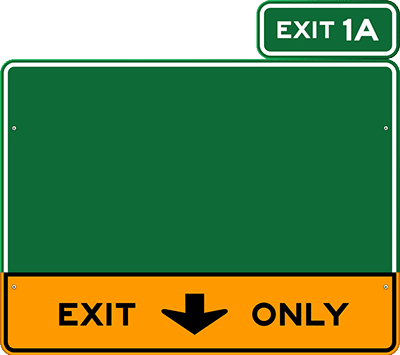Quiz: Leaving a freeway
ADVERTISEMENT
Correct!
Wrong!
Correct!
Wrong!
Correct!
Wrong!
Share the quiz to show your results !
Subscribe to see your results
I got %%score%% of %%total%% right
More Learning Options:
Loading…
ADVERTISEMENT
Everything You Should Do When Exiting a Freeway
What is a Freeway/Highway?
A freeway or an expressway is a high-speed, multi-lane road that may be daunting for new and inexperienced drivers. Here, traffic separately goes in every direction, and ramps are used by every vehicle to enter and exit. Consequently, there is higher vehicle speed on a freeway compared to other types of road which makes it even more difficult and demanding in driving. But, if you are a skilled driver, freeways are safer to drive as there are no intersections, bike lanes, and pedestrians.
In a freeway, there are new lanes called High Occupancy Vehicle (HOV) lanes that should only be used by vehicles carrying a minimum number of people on the vehicle itself. Essentially, you should know how to maneuver your way in these lanes by learning the markings, signs, and rules situated in these lanes.
 What is a High Occupancy Vehicle (HOV) Lane?
What is a High Occupancy Vehicle (HOV) Lane?
An HOV lane is specifically designed for vehicles that carry a designated number of people. for those who choose to carpool or take transit, opting to use these lanes can save them time on the road. Also, HOV lanes are open 24 hours a day including weekdays. These lanes are beneficial as it reduces traffic by moving fewer people on a single-vehicle. As such, it reduces the number of vehicles on the freeway. If you are driving in these HOV lanes, you should recognize the signs and rules required to enter and exit an HOV lane. If you drive improperly, you can be ticketed by a police officer in an instant.
What to Do When You Enter a Freeway?
A freeway entrance is divided into two parts: an acceleration lane and an entrance ramp. If you enter through the entrance ramp, make sure that you check your mirrors and look ahead to gauge the traffic on the freeway. This helps you decide where you are going to move on the freeway lane. Now, after leaving the entrance ramp, you are now entering the acceleration ramp. Here, drivers increase their speed to merge with the speed of traffic on the freeway. As such, make sure that you give a signal and gradually increase your speed to merge smoothly with other vehicles.
What Should You When You Drive Along a Driveway?
Driving along a freeway means that you should maintain a steady speed and anticipate what might happen on the road ahead of you. here, you should keep your eyes on the road while scanning each of your sides while maintaining a close eye in your mirrors. Make sure that you stay clear from large vehicles. Eventually, their size might block your view of the road. As such, you should leave a clear space around your vehicle. Also, get into the habit of staying on the right side of the lane while letting other vehicles pass on the other lanes.
How Should You Exit a Freeway?
There are three parts to exiting a freeway: a deceleration lane driving out of the main traffic, an exit ramp, and an intersection either with a stop sign or with a traffic light. When you are exiting the freeway, signal that you are redirecting your vehicle to the deceleration lane, but do not slow down your speed. Essentially, exiting the freeway means that you should gradually reduce your vehicle’s speed. Make sure that you continually check your speedometer. You should take the next exit if you ever missed one

 What is a High Occupancy Vehicle (HOV) Lane?
What is a High Occupancy Vehicle (HOV) Lane?